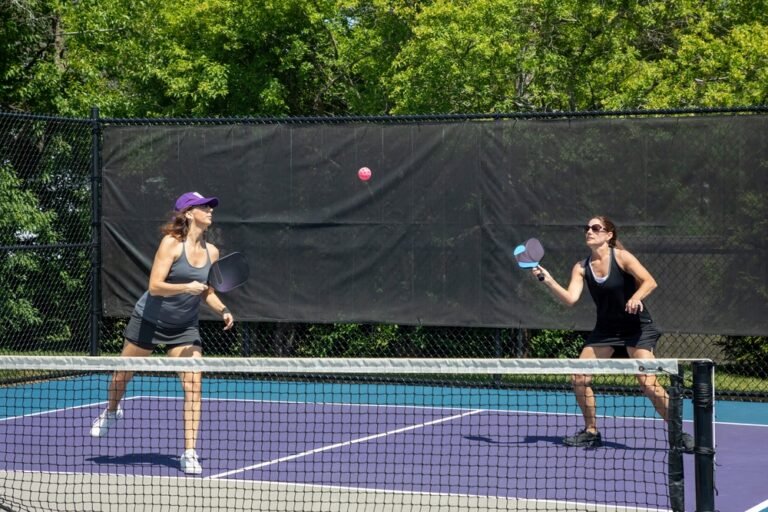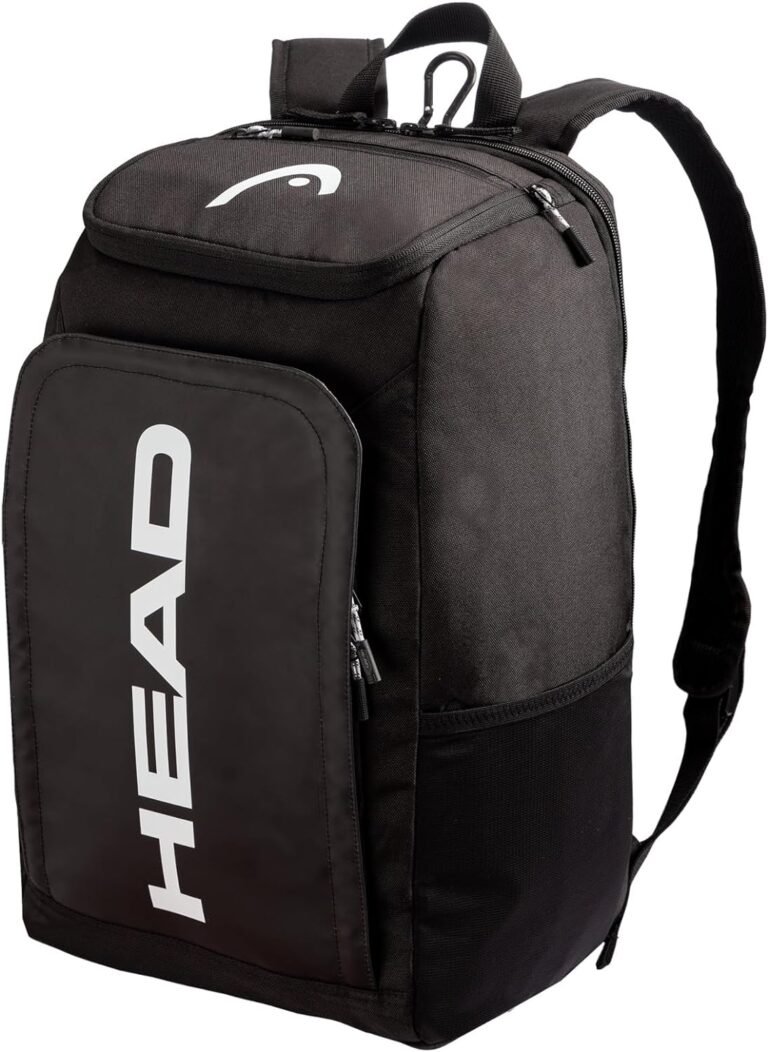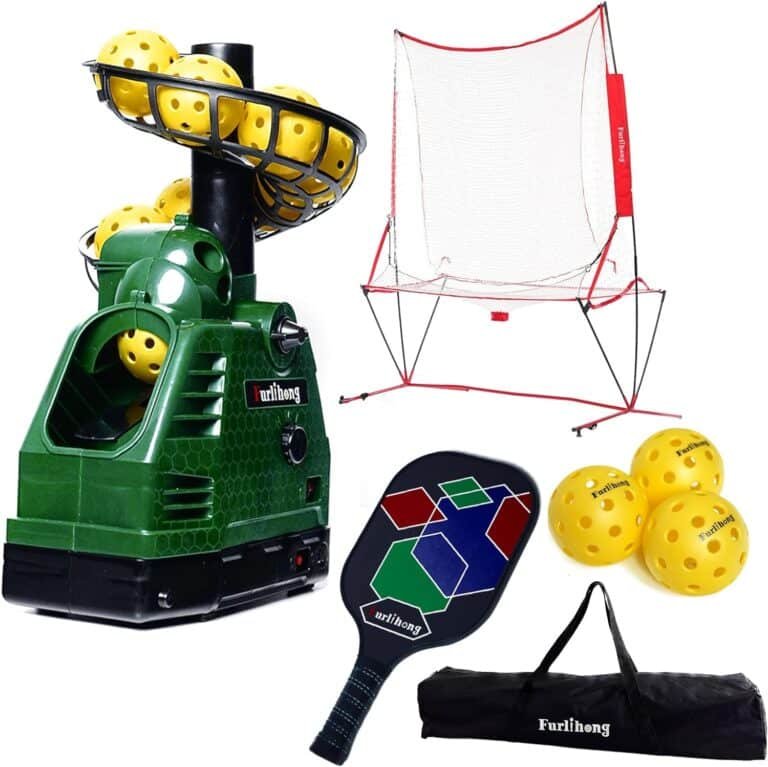History of Pickleball: A Popular Game Named After A Dog
Pickleball history is often a popular conversation topic after the game. This article will provide the best-known history according to those that played ‘back in the day.’
Pickleball History: Definition of Pickleball
Pickleball is a racquet sport that combines elements from various other racquet games to create an exhilarating experience on the court. The game is typically played on a badminton-sized court with specific line markings.
Two or four players engage in spirited battles, smacking the ball back and forth over a net lowered to 34 inches at the center.
Teaser about the Intriguing History of Pickleball
Behind the simplicity of pickleball history lies a fascinating history that dates back to 1965. The origins of this sport can be traced to Bainbridge Island, Washington, where three friends—Joel Pritchard, Barney McCallum, and Bill Bell—developed a game to entertain their families.
What began as an impromptu activity quickly evolved into something more significant. The name “pickleball” itself has a delightful mystery surrounding its origins.
Was it named after a family pet? Or derived from the term “pickle boat,” which refers to a vessel carrying oarsmen from multiple crews?
Intrigued? Let’s delve deeper into the captivating pickleball history, including early development and the subsequent growth that has transformed it into today’s global phenomenon.
Pickleball History: The Naming Mystery Behind “Pickleball”
The origins of the name “pickleball” are shrouded in delightful mystery. According to Barney McCallum, it was named after a family pet, a dog named Pickles. Legend has it that Pickles had an amusing penchant for chasing after stray balls and hiding them in bushes during those early days of the game’s development.
The players frequently exclaim, “Oh, that’s just Pickle’s ball!” whenever they encounter a lost ball. Over time, this phrase morphed into the catchy moniker we now recognize as pickleball—an affectionate nod to their furry companion who inadvertently became forever intertwined with their creation. Now that’s some pickleball history.
Pickleball History: Early Development and Evolution
During the early stages of pickleball history, the founders, Joel Pritchard, Barney McCallum, and Bill Bell, had to do with whatever equipment was available. They started using improvised wooden paddles originally fashioned from plywood planks.
These early paddles were often irregular in shape and size, as the founders handcrafted them. Over time, the wooden paddles evolved to include a handle grip for better control.
The ball used in pickleball’s infancy was quite distinct from what we see today. The founders utilized a perforated plastic ball that resembled a Wiffle ball.
The holes in the ball allowed for reduced speed while maintaining stability during gameplay. This unique design ensured players could strike the ball with greater accuracy and control.
Early rule modifications to suit different playing environments
As pickleball started gaining popularity beyond its birthplace, various communities began adopting their versions of rules to adapt to different playing environments. These adaptations led to slight variations in gameplay across different regions. One notable modification was related to court dimensions.
Initially played on badminton courts or driveways converted into makeshift courts, pickleball gradually transitioned onto tennis courts due to their availability and larger size. To accommodate this change, players made adjustments such as shortening the court’s length and narrowing its width.
Another significant development was the introduction of a non-volley zone known as “the kitchen.” This area is located close to the net on both sides of the court and extends seven feet from it. The purpose of this zone was to prevent players from dominating at the net by volleying every shot without allowing their opponents to respond effectively.
Players cannot volley the ball inside the kitchen, ensuring a fairer and more strategic gameplay experience. These early rule modifications highlight the adaptive nature of pickleball, as players continuously refine the game to suit different playing environments and maintain a balance between skill and strategy.
Pickleball History: Spread and Popularity
As pickleball’s popularity grew rapidly, a need arose for an organized structure to oversee the sport. The USA Pickleball Association (USAPA) was established in 1984 in response to this demand and is a huge milestone in pickleball history.
The USAPA acted as a central authority for the sport in the United States, providing guidance and support to players, organizing tournaments, and promoting pickleball at both recreational and competitive levels. Their mission was not limited to national affairs; they also played a crucial role in fostering international collaboration.
Recognizing that pickleball had transcended national boundaries, efforts were made to establish a global governing body. In 2010, the International Federation of Pickleball (IFP) began promoting and developing pickleball worldwide, another milestone in pickleball history.
The formation of the IFP served as a platform for different countries to come together and create standardized regulations that would govern the sport internationally. IFP facilitated cooperation between various national associations through its initiatives, fostering cross-cultural exchange and ensuring uniformity in rules across different regions.
Efforts toward standardizing rules and equipment
One significant aspect of organizational growth within pickleball history is the ongoing standardization efforts. With multiple variations emerging due to regional adaptations or personal preferences among players, it became imperative to unify certain aspects of the game for consistency. The governing bodies played an essential role in streamlining these elements by establishing standardized rules that applied universally across all levels of play.
These regulations encompassed areas such as scoring system, court dimensions, net height specifications, paddle requirements, and limitations regarding player positioning during gameplay. By implementing these standards globally through collaboration between USAPA and IFP, the sport of pickleball could maintain its integrity and ensure fairness for all participants.
Standardized rules provided a level playing field and facilitated the growth of competitive pickleball, making it more accessible and enjoyable for players worldwide. The efforts towards standardization have contributed significantly to the continued rise and recognition of pickleball as a legitimate sport globally.
Pickleball Today: Global Phenomenon
Popularity Surged across North America, Europe, Asia, and Australia
Pickleball has transcended its humble origins and has become a global sensation. The sport’s popularity has experienced an unprecedented surge that knows no boundaries. Starting in North America, pickleball fever spread like wildfire, captivating players of all ages and skill levels.
The United States alone boasts millions of active participants who have embraced the game’s accessibility and competitive nature. Across the Atlantic, Europe has also caught the ‘pickleball bug’, which I call my wife.
Countries like Spain, Italy, Germany, and the United Kingdom have witnessed remarkable growth in their pickleball communities. Local clubs and organizations have sprouted up everywhere to accommodate the demand for courts and events, creating pickleball history worldwide.
Even traditional tennis clubs have opened their doors to this new racquet sports phenomenon. Pickleball’s reach extends beyond North America and Europe, enthusiastically reaching Asia.
Countries like China, Japan, South Korea, and Thailand have embraced the sport wholeheartedly. Complemented by their rich sporting culture and passion for competition, Asian nations host increasingly popular pickleball tournaments that showcase top talent worldwide.
The remarkable spread of pickleball would only be complete if Australia were mentioned. Down under, players have welcomed this addictive game with open arms.
Australians are joining the fun from Sydney to Perth to Melbourne by setting up dedicated pickleball venues across the continent. This wave of popularity is a testament to how quickly this engaging sport can capture hearts globally.
Pickleball History: Conclusion
From humble beginnings to a global phenomenon, pickleball history amplifies the power of passion and camaraderie. Witnessing how this sport has united people across continents and cultures under a common love for racket sports is remarkable.
As pickleball grows exponentially worldwide, it shows no signs of slowing down. With each passing day, more individuals are discovering the joy and thrill that pickleball brings.
This racquet sport has become a symbol of unity in a fragmented world by fostering inclusivity and friendly competition regardless of age or skill level. So, let us relish in this remarkable chapter of pickleball’s history as we eagerly await what lies ahead for this exhilarating game.

FAQs (Frequently Asked Questions)
Q: Who invented pickleball?
Pickleball originated in Washington, USA, in 1965, created by Joel Pritchard, Bill Bell, and Barney McCallum as a backyard family game.
Q: What is pickleball, and why is it called pickleball?
Pickleball is a paddle sport that combines elements of tennis, badminton, and table tennis. It is played with a perforated plastic ball and paddles on a court. The name’s origin is debated, with one story attributing it to the Pritchards’ dog, Pickles, who would chase the ball, and another suggesting it comes from the term “pickle boat,” referring to the last boat to return with its catch, analogous to the game’s creation from a mix of sports.
Q: What started the pickleball craze?
The pickleball craze began as the sport gained popularity for its accessibility, social nature, and the ability to be played by people of all ages and skill levels. Its growth was further fueled by community support, the establishment of clubs, and national organizations promoting the sport.
Q: Where is pickleball most popular in the world?
Pickleball is most popular in the United States, particularly in states with warmer climates like Florida, Arizona, and California, where it can be played year-round. Its popularity is also growing internationally in countries such as Canada, Spain, and India.







Наиболее свежие новости моды.
Исчерпывающие события всемирных подуимов.
Модные дома, бренды, haute couture.
Новое место для трендовых людей.
https://egomoda.ru/
Несомненно важные новинки подиума.
Важные мероприятия самых влиятельных подуимов.
Модные дома, торговые марки, высокая мода.
Самое приятное место для трендовых хайпбистов.
https://whitesneaker.ru/
Абсолютно важные события модного мира.
Важные эвенты самых влиятельных подуимов.
Модные дома, бренды, гедонизм.
Приятное место для стильныех людей.
https://urban-moda.ru/
Несомненно важные новости моды.
Важные эвенты лучших подуимов.
Модные дома, торговые марки, высокая мода.
Лучшее место для трендовых людей.
https://worldsfashion.ru/